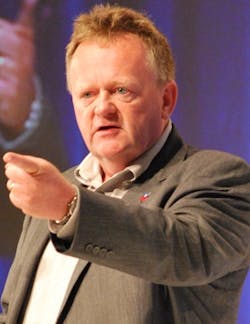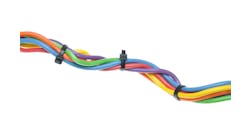As the age of automation reaches popular culture, predictions vary—will the robots work for us, or will they own us? But whatever form the future takes, it's going to be highly profitable. The value of the Internet of Things (IoT) to businesses of all kinds is expected to exceed $1.9 trillion over the next decade, with a good portion coming from the industrial sector, the Industrial IoT (IIoT).
Spoiled by the ease of using their smart phones and apps, many might think the IIoT is simple: I am connected, therefore I can do amazing things. "Not so fast," said Darek Kominek, senior product marketing manager, Matrikon, to attendees of the session, "How Digital Transformation Enables Smart Operations and Enterprise Optimization," today at the 2015 Honeywell Users Group Americas symposium in San Antonio.
"To make IIoT information useful, we must be able to put it and its context in a common language, analyze it and feed it to someone who can use it to do something," said Kominek, "And you don't want to send everything to everybody. Along the way, you need firewalls and security."
The IIoT involves Big Data. "Being in process control, you're used to historians, and that's a lot of data," Kominek said. "But the more information you have, the more conclusions you can draw. Big Data is even more than you're used to."
That Big Data needs big analysis, which is best done with the power of cloud computing, Kominek said. "A cloud is a communal area where information can be stored, analyzed and shared among various entities, from within your organization to supply chain, equipment, service and customer companies, to coordinate and optimize how a business runs," Kominek said. "There are hundreds of different types of clouds, both public and private."
"IoT is reshaping the world around us. We've all been living and breathing it with our smart devices, and now we're bringing it into the industrial world." Tom Burke, president and executive director, OPC Foundation, at Honeywell User Group (HUG) 2015 in San Antonio, Texas.
Processed information comes back to the factory floor to empower the workforce, often through "cognitive augmentation," Kominek said. "It doesn't replace the experts on the ground; it gives them the information and insights they need to be more effective."
The IIoT empowers digital business applications that allow companies to work together on common problems and better serve their customers, and the availability of specialized, analyzed information is giving rise to a smart workforce. To support the variety of applications, the information must be delivered with context so it can be understood and used in a variety of ways by a variety of people.
Kominek identified three major challenges for those who would embrace the IIoT:
- Legacy systems—Users must migrate or add digital information with new communications and integration;
- Industry vertical silos—Each industry has its own way of structuring and labeling data that needs to come together for analysis and use;
- Security—A variety of protocols and sources need to be connected, yet secure.
OPC UA to the rescue
"IIoT technology is being defined and funded by many global entities, including governments," said Tom Burke, president and executive director, OPC Foundation. In Europe, the initiative to improve smarter automation efficiently and effectively through standardization is called "Industrie 4.0." in China, it's "Made in China 2025," and in the United States, it's spearheaded by the Industrial Internet Consortium (IIC). "Industrie 4.0 chose OPC UA to connect and integrate things with automation systems and with the cloud," Burke said. By enabling communications among disparate protocols, devices, controllers and systems, OPC UA provides open data connectivity, preserves data context and ensures security.
"OPC UA can be used on any hardware platforms, from bare metal with no operating system on up, and on any operating system—Windows, Linux, Android, iOS," said Kominek. "It meets the requirements for open standards and transfers data between standards and protocols."
OPC UA preserves context by providing a customizable information structure that different devices can populate in their own way. The device manufacturer can predefine what is available in its device, and when it's plugged in, OPC UA will load its model and provide its information in a common structure. "It's a step closer to truly plug-and-play," Kominek said.
"OPC UA provides data security from the ground up, based on the latest security standards, in layers with encryption that move with the technology," Kominek said. "As hackers get more sophisticated, OPC gets better."
Honeywell is on the OPC Foundation board of directors, and "Matrikon is committed to open systems," Burke said. "They understand the value." Other examples of OPC UA adoption include the oil and gas industry group MDIS, to define objects and standardization among oil companies and automation vendors for subsea operations; Oracle, as a reference architecture for a gateway solution between devices and the cloud; Microsoft, for bringing device data into its Azure cloud; utilities, for bringing smart meter data to the cloud; and SAP, to monitor electrical load balance, implement demand response and control wastewater valves.
"IoT is reshaping the world around us," Burke said. "We've all been living and breathing this with our smart devices, and now we're bringing it into the industrial world."







